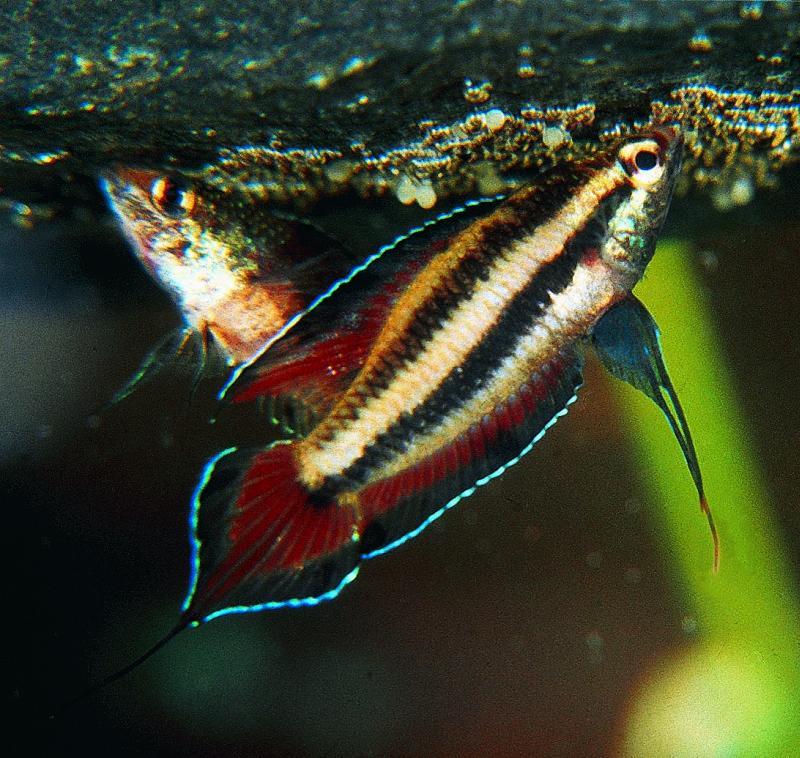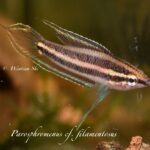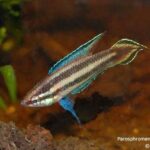
Vierke 1981
First description: Parosphromenus filamentosus n.sp. from SO Borneo (Pisces: Belontiidae). Senckenbergiana Biologica, 61: 363-367.
Characteristics: Overall length 4.5 cm. Fin formula: Dorsal XII-XIII, 6-7, total 18-20, anal XI-XII, 10, total 21-22. Together with P.deissneri, P.quindecim and P.paludicola this species belongs to the licorice gouramis with particularly long-based dorsal fin.
For the males it is structurally, and in terms of colour, easily recognisable due to the characteristic caudal: extended with a clear filament, inner area brown/red broad black framing and a thin white/blue edge. This edge and framing appear again in the dorsal and anal fin, which are brown/red or blue/green iridescent with small or larger portions of the respectively other colour. Probably these colour variations indicate different populations. The ventral fins are green/blue with long filaments. In spawning mood,the females show the genus-typical pale colouring, but noticeable coloured edges in the unpaired fins. The dorsal fin is often edgeless, but it can have a filament, as well (see photo Koomans). Also the caudal fin is pointed, but with a less distinct filament compared to the males.
Similar species: in the ,he risk of confusion with other licorice gouramis is very low, since no other forms or varieties are known, which have a similar combination of characteristics. Also the females can be distinguished fairly well from other licorice gouramis by the shape of the caudal fin, the long-based dorsal fin and often by faint colour patterns in dorsal and anal fin. In any case, this is possible when they show their courtship colouring.
Occurrence / Distribution: P. filamentosus occurs in Kalimantan Tengah (Borneo, Indonesia) in jungle river systems near Banjarmasin. As with most other licorice gouramis, the exact extent of its range is unknown.
Threat: not known, but likely to be very high. As the extent of its distribution is not known, it must be assumed that its existence is highly endangered, because large-scale destruction of forest habitats have occurred in the Banjarmasin area .
Discovery/First import:
Trade: the species appears rarely, but from time to time in the international trade.
Care / Breeding: No special conditions. P. filamentosus is one of the least specialised licorice gouramis and it may be recommended, even to people who have little experience with this genus . Builds a large foam nest compared with other forms of the genus and can produce large clutches (Kopic: up to 200 eggs), but in most cases far less (normally adult animals lay 50-70 eggs).
Behaviour / Particularities: Perhaps the species with the most distinct foam nest in the cave. To build it, the male picks up air from the water surface several times. Head-down-courtship. The courting males can develop a very smoky dark overall coloration. The female is species-typical pale.
Literature:
Weblinks:
















